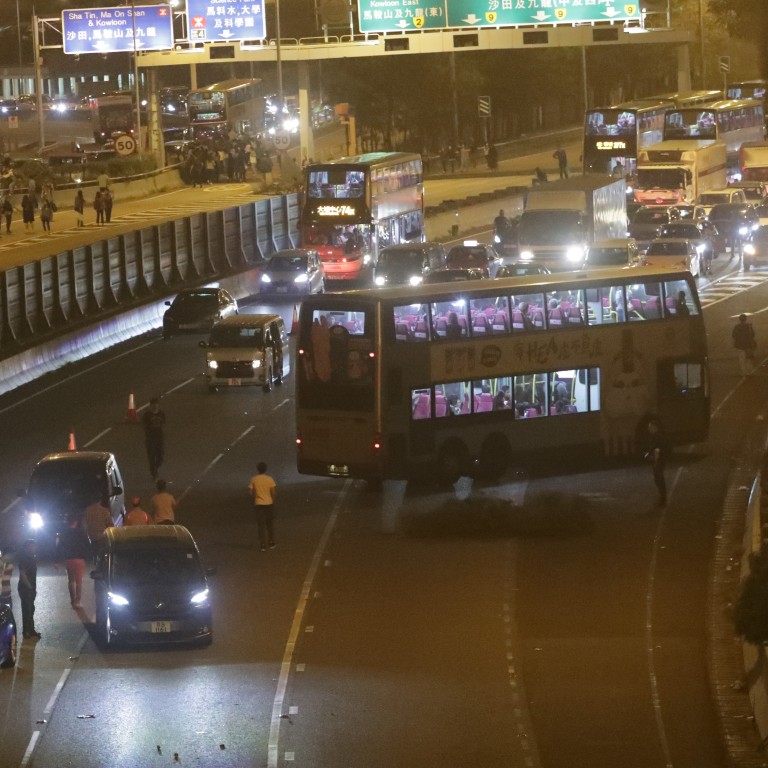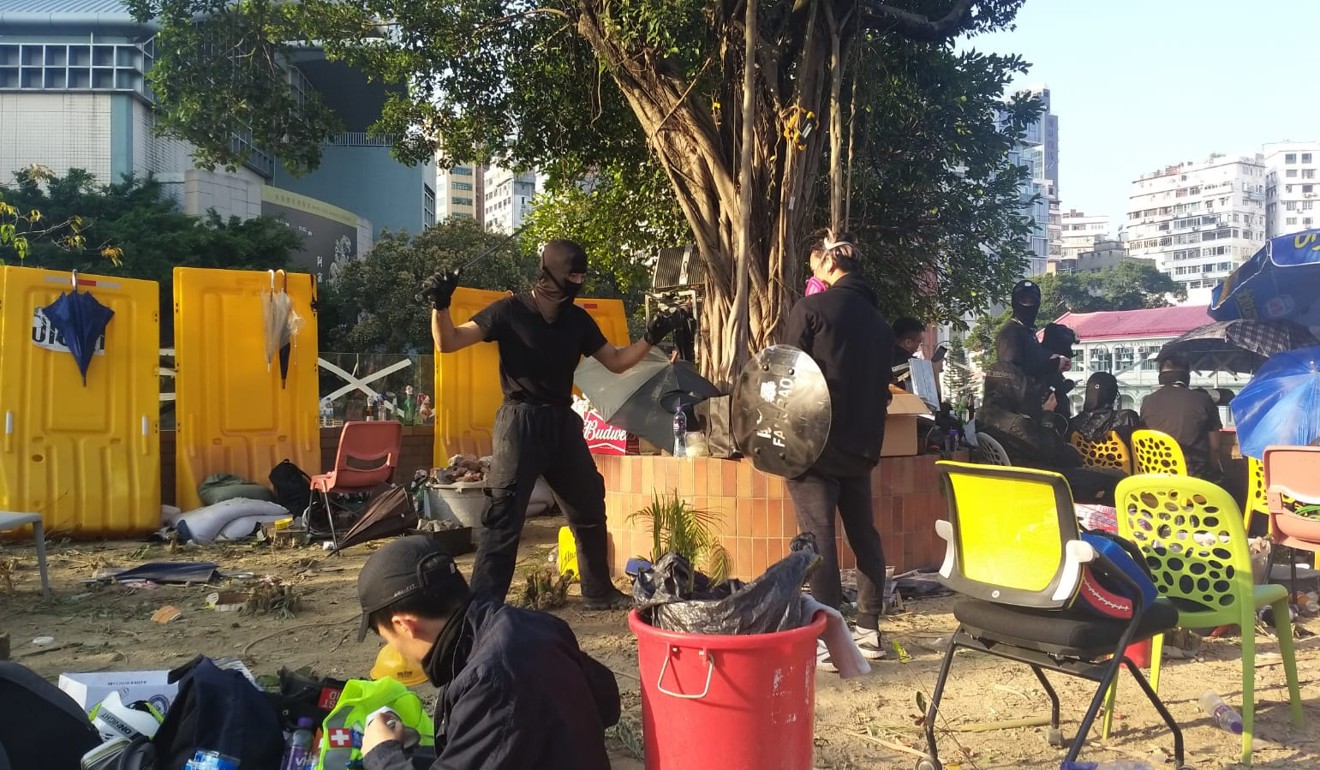
Hong Kong protests: Tolo Highway closed eight hours after partial reopening as Chief Secretary Matthew Cheung fails to give district council elections guarantee
- Road was reopened as ‘friendly gesture’ by activists who say their argument is with government, not local residents
- During a 3am press conference, protesters had called on Cheung to provide assurance that the district council elections would take place as planned
A major highway in Hong Kong was blocked again on Friday night, eight hours after it had been partially reopened.
Live footage showed that vehicles, including private cars and buses,were stuck on both northbound and southbound routes of the Tolo Highway at around 7.30pm.
The blockage happened after Chief Secretary Matthew Cheung Kin-chung held a press conference, saying the government was preparing for the district council elections to be held on November 24 but did not pledge they would definitely proceed.
However, the move came with conditions attached, as activists at Chinese University issued an ultimatum, giving the government 24 hours to guarantee that district council elections would go ahead as planned.
The protesters’ announcement, made at a 3am press conference, was not universally popular, with the university’s student union appearing to distance itself from the move. In a statement a few hours later, the union said it was not aware of the election demand, and said it had held its own meetings with people at the school.
Shortly after noon, vehicles were passing along one lane on both the northbound and southbound sides of the highway. Police had escorted workmen to put down traffic cones to mark the passable lanes for drivers at about 10.30am on Friday, but said in a statement that debris meant road conditions remained dangerous.

“The blockade of Tolo Highway for the past few days has brought inconvenience to residents, especially the elderly, so we hope to offer a friendly gesture,” said one of the three representatives at the press conference.
“Our target is the government, not Hong Kong residents.”
An essential artery in Hong Kong, Tolo Highway links the New Territories with the busy Kowloon district where many residents work.
Public transport has not returned to normal today, with MTR stations closed, and hundreds of bus routes cancelled. And on Friday morning, the East Rail line was again suspended after petrol bombs were thrown onto the tracks at Kowloon Tong station.
A year one student protester who identified himself as Matt, 20, said he had been “defending” the No 2 bridge at Chinese University since Monday, and took part in the discussion as to whether to reopen the highway.
He disagreed with the student union’s statement, and said it might be “trying to divide the protesters”.
“[Protesters have discussed] the possibility that by opening one single lane on both sides of the Tolo Highway, each lane represents one of the five demands, therefore by putting out this friendly gesture, they hope the government would agree to release all those arrested in the protests [since June] and an independent commission of inquiry will be set up,” he said.
Meanwhile, the Citizens’ Press Conference, in protesters have held regular media sessions, called on Hongkongers to continue the fight “while we have the upper hand”, stressing the general strike would continue into Friday.
On social media, reactions to the decision were mixed. One commenter on Facebook wrote: “I have never been so happy to be stuck in traffic, add oil”, but another said: “While you maintained the ‘leaderless’ model, those three frontliners have started ‘leading’”, referring to the three representatives who had announced the decision to reopen the highway.
A 19-year-old psychology student, who gave his name as KK, practised how to attack police with a baton while guarding one of the PolyU entrances.
“I bought the shield and baton set from Taobao back in July. I’m sure suppliers won’t deliver these to Hong Kong any more,” he said. “My semester ended earlier, while I was rushing to finish my term papers. I’m not afraid of failing my classes or getting arrested. It is what it is for our generation.”

Without naming the city’s leader Carrie Lam Cheng Yuet-ngor, he said he firmly supported the administration “led by the chief executive to execute its functions in accordance with the law”.

Xi described the continuing violence as a threat not just to law and order and the city’s prosperity and stability but also “a blatant challenge to the bottom line of the ‘one country, two systems’” governing principle.
Cheng was in London to promote Hong Kong as a centre for dispute resolution. Her lecture was later cancelled.
“The Secretary for Justice castigates the violent mob in London today causing her serious bodily harm on her way to an event venue,” her office said in a statement.
“The secretary denounces all forms of violence and radicalism depriving others’ legitimate rights in the pretext of pursuing their political ideals, which would never be in the interest of Hong Kong and any civilised society.”
Lam issued a statement condemning the protesters’ actions against Cheng. “The barbaric behaviour goes beyond the line of a civil society, it should be strongly condemned,” she said.



